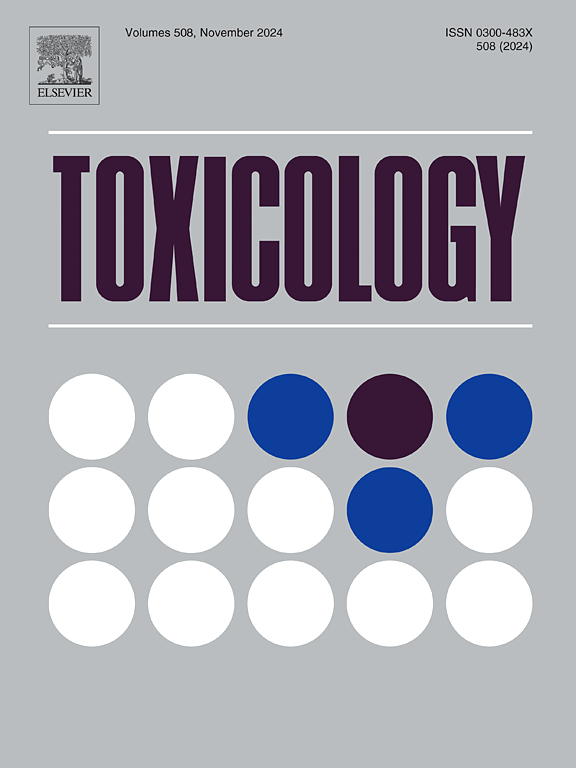Importance of post-translational protein modifications in PFAS toxicity
IF 4.6
3区 医学
Q1 PHARMACOLOGY & PHARMACY
引用次数: 0
Abstract
Per- and polyfluoroalkyl substances (PFAS) are a group of synthetic compounds known for their high chemical stability, resistance to degradation. This class includes thousands of different compounds widely used in various products like non-stick cookware, water-repellent fabrics, food packaging, firefighting foam, and many personal care products. While these properties contribute to their industrial utility, they also pose significant environmental and health concerns due in part to long environmental and biological half-lives. PFAS contamination has been widely reported in water sources and soil, along with reports of bioaccumulation in the blood and tissues of living organisms. These chemicals have been linked to a range of health effects, including potential risks to cancer, neurotoxicity, and developmental disorders. Given their broad involvement in disease pathology, it is critical to investigate the underlying molecular mechanisms of PFAS toxicity. This review evaluates current research on the impact of various PFAS on different proteins, their post-translational modifications (PTMs), and the effects on cellular signalling pathways. It also reviews proteomic studies conducted over the years that aim to elucidate these protein-level changes, while highlighting existing gaps in the field. Despite growing attention to PFAS toxicity, significant advances are required in elucidating the primary mechanisms of toxic action. Studying PFAS effects from a proteome perspective could be very promising. In particular, the lack of organ-specific proteomic data, including studies on distinct brain regions and PTM-specific profiling, represents a critical area for future research.
翻译后蛋白修饰在PFAS毒性中的重要性
全氟烷基和多氟烷基物质(PFAS)是一类以化学稳定性高、耐降解而闻名的合成化合物。这类化合物包括数千种不同的化合物,广泛用于各种产品,如不粘锅、防水织物、食品包装、消防泡沫和许多个人护理产品。虽然这些特性有助于它们的工业用途,但它们也造成了严重的环境和健康问题,部分原因是它们的环境和生物半衰期很长。PFAS污染已被广泛报道在水源和土壤中,以及生物积累在血液和生物体组织中的报道。这些化学物质与一系列健康影响有关,包括潜在的癌症风险、神经毒性和发育障碍。鉴于它们广泛参与疾病病理学,研究PFAS毒性的潜在分子机制至关重要。本文综述了各种PFAS对不同蛋白质的影响、它们的翻译后修饰(PTMs)以及对细胞信号通路的影响。它还回顾了多年来进行的旨在阐明这些蛋白质水平变化的蛋白质组学研究,同时强调了该领域现有的空白。尽管对PFAS毒性的关注越来越多,但在阐明毒性作用的主要机制方面仍需取得重大进展。从蛋白质组学的角度研究PFAS的影响是非常有希望的。特别是,器官特异性蛋白质组学数据的缺乏,包括对不同大脑区域和ptm特异性分析的研究,代表了未来研究的关键领域。
本文章由计算机程序翻译,如有差异,请以英文原文为准。
求助全文
约1分钟内获得全文
求助全文
来源期刊

Toxicology
医学-毒理学
CiteScore
7.80
自引率
4.40%
发文量
222
审稿时长
23 days
期刊介绍:
Toxicology is an international, peer-reviewed journal that publishes only the highest quality original scientific research and critical reviews describing hypothesis-based investigations into mechanisms of toxicity associated with exposures to xenobiotic chemicals, particularly as it relates to human health. In this respect "mechanisms" is defined on both the macro (e.g. physiological, biological, kinetic, species, sex, etc.) and molecular (genomic, transcriptomic, metabolic, etc.) scale. Emphasis is placed on findings that identify novel hazards and that can be extrapolated to exposures and mechanisms that are relevant to estimating human risk. Toxicology also publishes brief communications, personal commentaries and opinion articles, as well as concise expert reviews on contemporary topics. All research and review articles published in Toxicology are subject to rigorous peer review. Authors are asked to contact the Editor-in-Chief prior to submitting review articles or commentaries for consideration for publication in Toxicology.
 求助内容:
求助内容: 应助结果提醒方式:
应助结果提醒方式:


